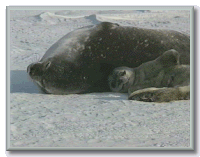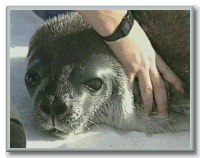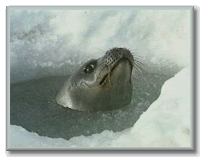Seals
Together with penguins, seals are probably the most characteristic, and certainly the most engaging, animals that a visitor to the Antarctic will encounter. Seals are mammals which have adopted an aquatic mode of life but which, unlike the whales, retain the need to return to land (or in the case of most polar seals, to ice) to breed.
The Antarctic supports a much larger number of seals than does the Arctic; indeed, one species alone, the Crabeater Seal, accounts for about half the world's seals. The greater abundance of Antarctic seals is due to much larger, often more productive feeding areas within the vast expanses of the Southern Oceans; the seals have also exploited the drifting pack ice as a breeding ground, and there are no native terrestrial predators, such as polar bears or man.
|
|
|
Antarctic seals therefore behave very differently from the northern seals and show little fear of man. Often seals in the Antarctic can be approached closely without their apparently showing obvious signs of disturbance. However, careful observation of this behavior will reveal that groups of breeding seals, or females accompanied by pups, can exhibit signs of stress, which may lead to the abandonment of young, when confronted by a human visitor. Therefore, it is best not to approach seals too closely, and to endeavor to observe or photograph from a distance. (See comments from experienced seal researcher Mike Castellini in program 5 about treaty-mandated precautions taken to not disturb the seals his group studies.)
|
Seals, including pups, should never be handled. Not only can this molestation of seals be harmful to them but, as Antarctic seals are capable of surprisingly swift responses, severe injuries to the molester can also result.
The Antarctic seals have developed different ways of exploiting their marine food supply. These involve differences in both feeding habits and geographical distribution.
|
|
|
WANT TO LEARN MORE?
|
|
Websites
• Seals Links to information on the Crabeater, Elephant, Antarctic Fur, Leopard and Weddell seals. |
![]()


